Tokina AT-X PRO FX SD 24-70 mm f/2.8 (IF)
4. Image resolution
Let’s check how the tested lens compares; the results in the frame centre at 24, 45 and 70 mm presents a graph shown below.
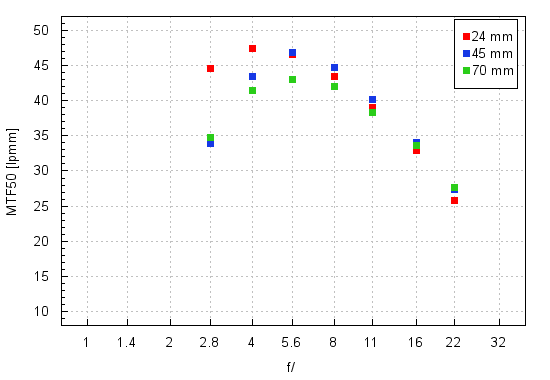
Please Support UsIf you enjoy our reviews and articles, and you want us to continue our work please, support our website by donating through PayPal. The funds are going to be used for paying our editorial team, renting servers, and equipping our testing studio; only that way we will be able to continue providing you interesting content for free. |
- - - - - - - - - - - - - - - - - - - - - - - - - - - - - - - - - - - - - - - - - - - - - - - -
The results reached by the Tokina at the shortest focal length are simply sensational. It’s enough to say they are just a tad better than the results of the expensive Canon EF 24–70 mm f/2.8L II USM at the same focal length.
Longer end of focal range doesn’t keep such a high level but it doesn’t mean you should complain about it. At the maximum relative aperture MTFs reach a good level of 34-35 lpmm and on stopping down they don’t have any problem with exceeding 40 lpmm. In the case of the 45-70 mm range the Tokina loses the duel with the expensive Canon but that defeat is not something painful or shameful, especially that the tested lens still fares better than e.g. the Sigma 24–70 mm f/2.8 or the Tamron 24–70 mm f/2.8 VC.
Will the situation be equally good on the edge of the APS-C/DX sensor? Let’s check it out.
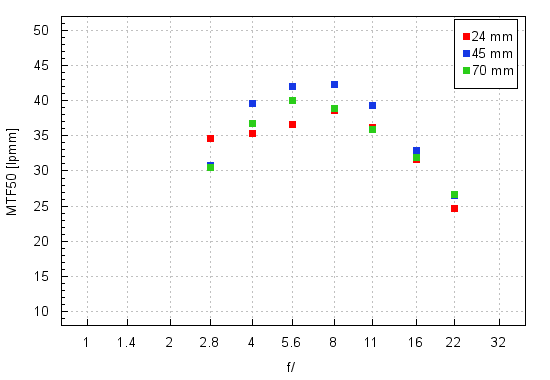
This time the results are a bit more complex but two things are important. Firstly, at every focal length even at the maximum relative aperture the image remains fully useful. Secondly, after stopping down the aperture by about 2-3 EV the MTFs increase to a level which should be called very good.
Once again the Tokina might be proud of its performance even if you compare it to other expensive system construction. After all e.g. the Canon EF 24–70 mm f/2.8L II USM wasn’t able to exceed 40 lpmm at any combination of apertures and focal lengths and yet the Tokina manages to do so in the middle of its focal range.
Now let’s see how the tested lens fares on the edge of full frame.
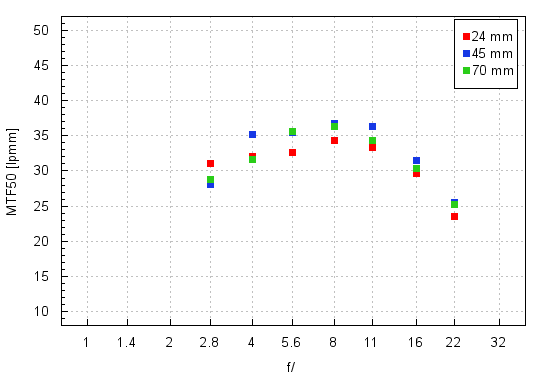
There are some problems at the maximum relative aperture where, in the 45-70 mm range, the lens drops below the decency level. Fortunately at the shortest focal length you are already above that level and neither the Canon EF 24–70 mm f/2.8L II USM nor the Sigma nor the Tamron managed to do so. Even the Nikkor Nikkor AF-S 24–70 mm f/2.8E ED VR, so praised by us for its performance on the edge of the frame, outperformed the Tokina only in some aspects.
The summary of this chapter can be only positive. When it comes to the resolution the Tokina 24-70 mm f/2.8 doesn’t have any weaknesses. It fares better than its no-system competitors and it compares favourably to expensive constructions produced by Canon, Nikon and Sony.
At the end of this chapter traditionally we present crops taken from photos of our resolution testing chart; they were saved as JPEG files.
| Canon 5D MkIII, JPEG, 24 mm, f/4.0 |
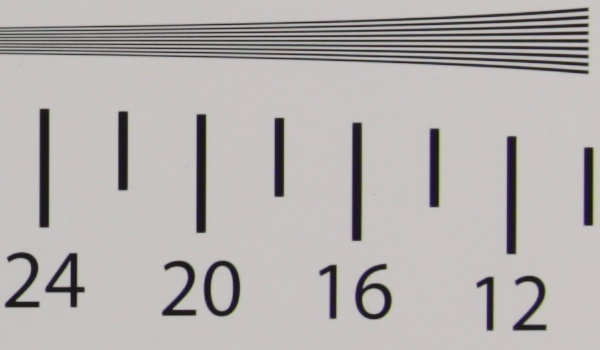 |
| Canon 5D MkIII, JPEG, 45 mm, f/2.8 |
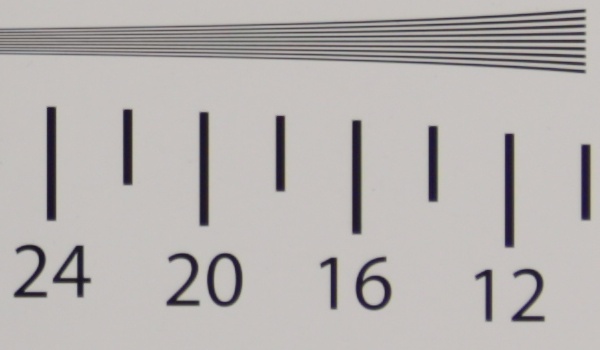 |






